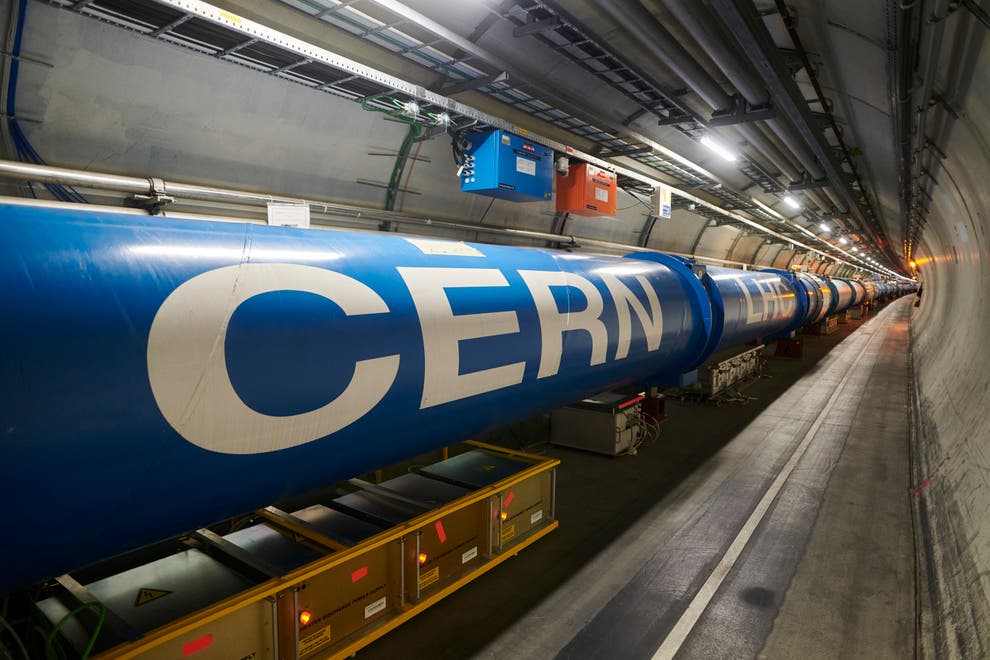Travel to Trisolaris (Alpha Centauri)
If you ever want to travel to our nearest neighbor star, Alpha Centauri (4.3 light years from us), aka Trisolaris in Liu Cixin’s “The three-body problem”[1] [2] [3], here’re some options for you to consider:

- Spaceship Mass0: as the name suggested, this is only for passengers with 0 mass, such as photon and graviton. If you believe you don’t have any mass, great news for you, you can travel to anywhere of the universe instantly. For the rest of us on earth, we still think you’ll need 4.3 years to Trisolaris. To send some photons to Trasolaris is really easy, just shine your flash light aiming at the right direction.

-
Spaceship Particle: sub-atomic particles such as protons, electrons or sophon[2], can be accelerated to a really high speed. With our current technology, a proton can reach 99.999999% speed of light. With this speed, they can arrive Trisolaris in 5.3 hours in their own time.
-
Comfort1g: this ship maintain a constant 1g (about 9.8 $m/s^2$) acceleration throughout the whole trip (acceleration direction reversed at the middle of the trip). The astronauts, taikonnauts or cosmonauts will feel like they’re still on earth. This is the most comfortable option we’ve for you. The only issue is we don’t know a viable technology to build the ship, since the ship need to reach a speed as high as 0.97c.
-
Antimatter: a spaceship use matter-antimatter annihilation to propel itself. A professor from Kent State University and a high school student conclude we could reach 0.7c with this method[4]. If the ship was ever built, we could travel to Trasolaris in 4.3 years plus 32 days. The only issue is the price of antimatter, which is currently estimated at $62.5 trillion per GRAM[5], and we need about 3 times the mass of payload antimatter[6] to reach 0.7c. I don’t even want to estimate the cost, it’s too depressing.
- Spaceship Sail uses high power laser shooting from earth to the large surface of the ship. A project called Breakthrough Starshot[7], founded by Yuri Milner, Stephen Hawking, and Mark Zuckerberg, believe we could send small prob with cameras to Trisolaris with speed of 0.2c. Update: NASA released a mission concept in 2017 to send probe to Alpha Centauri system in 2069 and reach there by 2113, 44 years with 0.1c[8].
-
Droplet: the legendary trasolaran space prob that destroyed almost whole Fleet International warships, can travel with the speed of 0.15c. Watch this video if you want to see it.
A droplet movie made by fans
-
Fusion: Nuclear powered rocket, is probably the most practical technology for us to travel outside solar system at the moment. Theoretical studies show we could reach 0.1c with nuclear rocket and reach Trisolaris in about 43 years [9].
-
The Trisolaran’s first fleet use antimatter to power their ship, but because the time they need to spent to collect antimatter from space, and the acceleration and deceleration, it’s estimated they need 400 years to travel from Trisolaris to earth [2].
-
The Staircase project in Liu’s book, sent Yun Tianming’s brain to the Trisolaran, could reach a speed of 0.01c with the help of ICBMs[3].
- 2023Best: NASA’s Juno space probe, which is the fastest spacecraft ever made, with the help of gravity assist from Earth and Jupiter, travel at speed of, err, 0.0002c, can reach Trisolaris in about 20000 years[10].
As you can see, we have a lot of options, just need some time, money, technology and science. A side note: when consider interstellar space travel, we’ve to distinguish the travel’s time and earth’s time as the speed approach light speed (larger than 0.1c). And if we’re talking about human travel (with one to few g low acceleration), we don’t need to consider the time dilation due to general relativity.
| Spaceship | Speed | Traveler | Traveler’s Time | Earth’s Time | Technology |
|---|---|---|---|---|---|
| Mass0 | 1c | Photon and Graviton | 0 | 4.3 years | Flash light |
| Particle | 0.99999999c | High energy particles | 5.3 hours | 4.3 years | Particle Accelerator[11] [12] |
| Comfort1g | 0-0.97c-0 | Human | 3.5 years | 5.6 years | Theoretical[13] |
| Antimatter | 0.7c | Antimatter Rocket | 4.3 years + 32 days | 5.7 years | matter antimatter annihilation[4] |
| Sail | 0.2c | Nanocraft | 21.1 years | 21.5 years | Solarsail[14] |
| Droplet | 0.15c | Alien probe | 28.3 years | 28.7 years | Unknown[3] |
| Fusion | 0.1c | Nuclear Rocket | 42.8 years | 43 years | Available[9] |
| Trisolaran First Fleet | 0-0.1c-0 | Trisolaran | 400 years | 400 years | Collecting Antimatter from space[2] |
| Staircase Project | 0.01c | Tianming Yun’s brain | 400 years | 400 years | ICBM pulse propulsion[3] |
| 2023Best | 0.0002c | Juno spacecraft | 20000 years | 20000 years | Chemical Roket[10] |
-
The Dark Forest (The Three-Body Problem Series, 2) ↩ ↩2 ↩3 ↩4
-
Beamed Core Antimatter Propulsion: Engine Design and Optimization ↩ ↩2
-
StackExchange: Amount of antimatter to propel large spaceship ↩
-
At full power, trillions of protons will race around the LHC accelerator ring 11 245 times a second, travelling at 99.9999991% the speed of light. ↩


